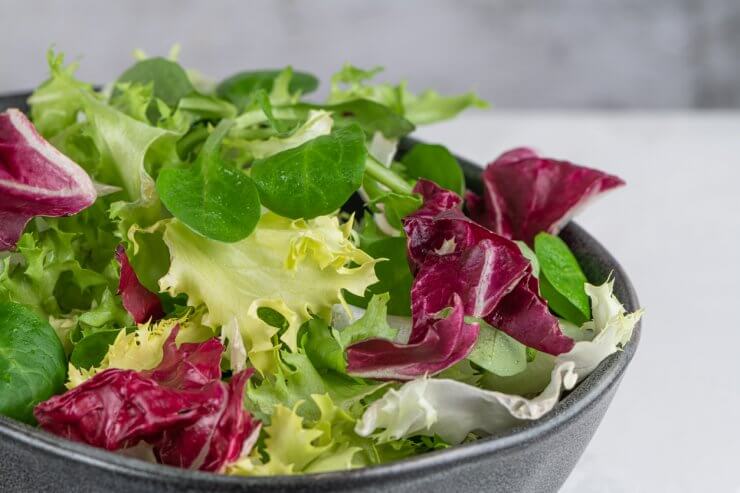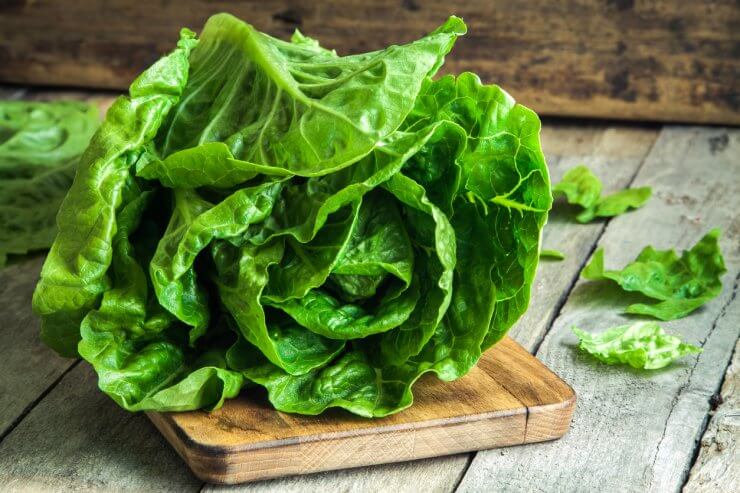
I know… “Salad” is not the first thing that comes to mind when many people think of delicious garden produce. My first memories of salad are tasteless iceberg lettuce and flavor-free tomatoes with ranch dressing as the only thing making them edible. But growing your own salad? It’s next-level goodness. It’s not hard either. Easy container gardening for beginners and even experienced gardeners is where it’s at!
Not trying to hate on iceberg lettuce too much. It does bring a nice crispness to the plate, but there are so many varieties of lettuces and other greens, and they can taste wildly different. Arugula is a little peppery, while Bibb lettuce is soft and has a hint of sweetness. Escarole is a touch bitter, and, of course, there’s always slightly bitter Romaine.
However, no one said you have to stick just to lettuce to make a salad. Plenty of other greens, especially in their younger states, are delightful. Baby beet greens, spinach, and kale all add unique flavor and texture to salads, as do herbs like mint or basil.
And, of course, you don’t even need to stop at leafy greens. Sliced radishes, shaved beets, and cherry tomatoes are all wonderful additions. But I’m getting a bit ahead of myself here. Back to the issue at hand, which is sharing some tips for easy container gardening for beginners.

Your 5-step guide to easy container gardening for beginners – the salad edition
There are a few things you have to get for success in container gardening—namely, your containers, soil, light, and seeds or seedlings. Therefore, step one is choosing the right container.
1. Pick your container carefully. The container is perhaps the most overlooked element in container gardening, oddly enough. While almost anything can be a container, you have to match it with the right plant. Herbs like oregano will grow just fine in long, somewhat shallow containers, while beets need a pot that’s 8″ to 10″ in depth.
2. Ensure you have proper drainage. No matter what kind of container you use – plastic, wood, ceramic, and so on – without adequate drainage, your plants will get root rot.
3. Choose the right soil. Luckily, this one is pretty easy. Container gardening, for beginners and experienced gardeners alike, is immensely more successful when using the right soil. And since soil companies want to sell you their stuff, right there in big letters on the front of every bag, you’ll see something that identifies potting mixes specifically for vegetables. More specifically, potting mix is designed to drain well, maintain proper amounts of moisture, and provide the nutrients your container vegetables need.
Pro Tip: Mix in some homemade compost to give your plants some extra love.
4. Lots of light. Your plants need plenty of light. Sunlight is preferable, but there are a wide array of growing lights available, too.
5. Choose the right seeds (or seedlings). There’s a little known secret in choosing your plants. It’s this: Plant what you want. Yes, some plants grow better than others in a container. But almost anything you would want in a salad will grow just fine, and you might as well plant what you enjoy eating rather than something you don’t enjoy only because it grows well in a container.
So to get you off to a good start, here are some of the salad vegetables I like that grow well in containers.
- Leaf lettuce
- Spinach
- Kale
- Radishes
- Bell peppers
- Cherry tomatoes
That’s a recipe for easy container gardening for beginners who enjoy harvesting fresh salad moments before it gets to the dinner table.
Do you have any favorite tips for growing a salad-centric container garden? I’d love to get your thoughts in the comments.


 Previous
Previous


What you you recommend for growing rhubarb in above ground planters? Depth, winter care?
All this information and more is available in our Rhubarb guide! https://foodgardening.mequoda.com/toc/collections-remarkable-rhubarb/